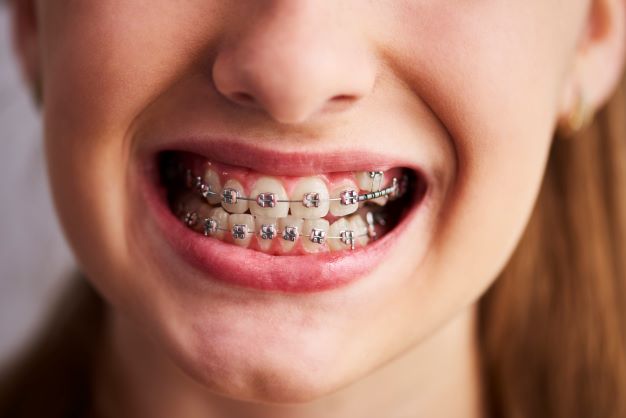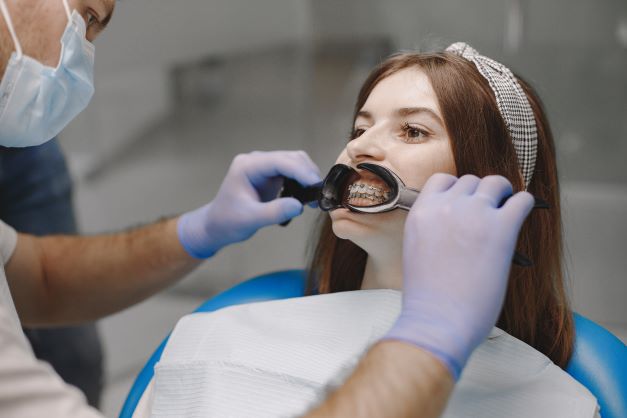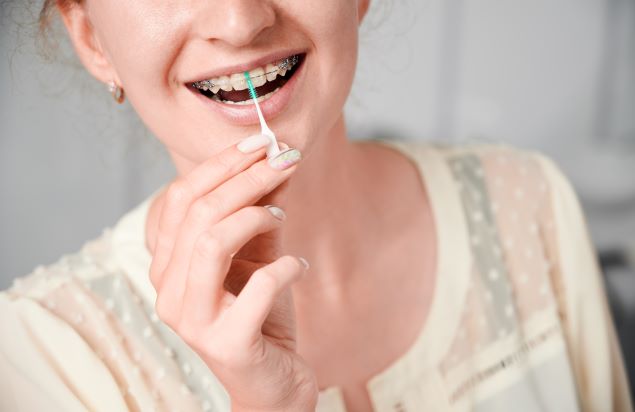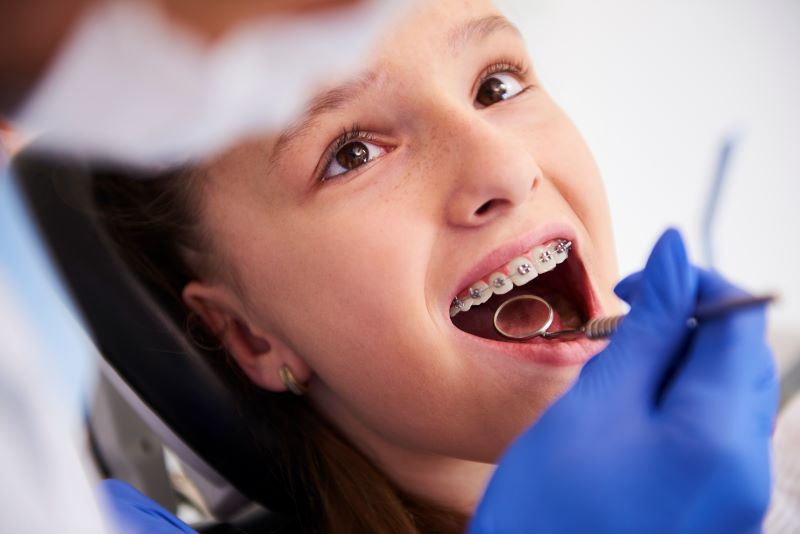6 min read
1056 words
Braces have become a popular choice for achieving a perfect smile and improving dental health. Straight teeth not only look good, but they also benefit your overall health by reducing the risk of tooth decay, gum disease, and even jaw problems. However, you need to take some specific measures for your braces to function properly. In this blog, we will discuss the essential dos and don’ts of braces to ensure you achieve the best results and maintain excellent dental health.

The Dos of Braces
Here are some of the dos of braces that you should keep in mind when preparing for your treatment:
1) Choose the Right Orthodontist

Make sure you find the right orthodontist with whom you feel comfortable during the treatment. You should research about their credentials rather than rushing with your decision. A good orthodontist will not only have the necessary expertise and experience, but they will also listen to you carefully and educate you with convincing answers. You should be aware of things like whether they handle emergency cases or not. You must attend all your appointments with your orthodontist to keep your braces in good condition and ensure your treatment is progressing as planned.
According to research, nearly 4 million Americans are undergoing orthodontics or have some form of dental braces. In California, the most populated state in the country, there is an even greater awareness and availability of orthodontic treatments. In 2020, more than 64% of people aged 18+ visited a dentist in California.
Most cities of California like Clovis offer various orthodontic treatment options, including traditional braces, Invisalign, and more, to help you achieve your desired results and improve your dental health. For instance, look up Braces Clovis CA to find skilled orthodontists who offer a wide range of treatments according to the specific needs of their patients.
2) Keep Your Braces Clean

Keeping your braces clean prevents plaque buildup, tooth decay, and gum disease. Here are some tips to help keep your braces clean:
- Brush after every meal: It’s essential to brush your teeth and braces after every meal. Use a soft-bristled toothbrush and fluoride toothpaste to clean all the surfaces of your teeth, including around the brackets and wires.
- Use an interdental brush: An interdental brush can help you clean between the wires and brackets, where your regular toothbrush may not reach. Use the brush gently, and avoid damaging the wires or brackets.
- Floss regularly: Flossing with braces can be tricky. Still, removing food particles and plaque from between your teeth is essential. Use a floss threader or special orthodontic floss to get under the wires and between the brackets.
- Rinse with mouthwash: A fluoride mouthwash can help kill bacteria and freshen your breath. Rinse with mouthwash after brushing and flossing to keep your braces clean.
3) Eat a Healthy, Braces-Friendly Diet

A braces-friendly diet helps to keep your teeth and gums healthy while you have braces. Here are some suggestions for a healthy and braces-friendly diet:
- Soft, easy-to-chew foods: These include cooked vegetables, mashed potatoes, smoothies, yogurt, and soups.
- Lean proteins: Choose lean meats like chicken, fish, and turkey. Vegetarian options like tofu and beans are also good choices.
- Crunchy fruits and vegetables: If you like crunchy foods, try cutting them into small pieces before eating them. Some good options include sliced apples, grapes, and carrots.
- Avoid hard and sticky foods: These can damage your braces and prolong your treatment. Foods to avoid are nuts, popcorn, candy, and chewing gum.
- Drink water: Stay hydrated with water instead of sugary drinks. Sugary drinks can damage your teeth and increase the risk of cavities.
4) Wear a Mouthguard
When you have braces, it’s crucial to wear a mouthguard. It will help keep your braces in good shape and safeguard your teeth from harm. There are a few considerations to make while selecting a mouthguard.
- First, check that it fits properly. Ideally, it should be close-fitting but not too tight.
- Next, pick a mouthguard that you can wear comfortably. You don’t want anything that will make breathing uncomfortable or challenging.
- Lastly, check if the mouthguard is simple to clean. Choose an easy-to-care-for material since you’ll have to clean it frequently.
The DON’TS of braces
When it comes to taking care of your braces, there are certain things you should avoid doing to ensure the best results. Here are a few don’ts when it comes to braces:
1) Don’t Chew On a Hard Or Sticky Substance
Foods like hard candy, popcorn, and sticky caramel can damage your braces, bend the wires or brackets, get stuck, cause discomfort, or even tooth decay. It’s important to avoid chewing on pens, pencils, or fingernails while you have braces. It can damage the braces and cause them to become less effective. Chewing on hard objects can also cause pain and discomfort. If you’re having trouble avoiding this habit, talk to your orthodontist about ways to break it.
2) Don’t Ignore Discomfort
Braces can be a great way to straighten teeth and improve your oral health. However, some discomforts are associated with getting braces, and you should not ignore any symptoms that arise.
Some common symptoms include:
- Soreness – Braces can cause soreness in the mouth, especially in the first few days after they are put on or adjusted. It is normal and should subside within a week or so.
- Pain – Braces can sometimes cause pain, especially if adjusted too tightly. If you experience significant pain, you should contact your orthodontist.
- Irritation – Braces can irritate the mouth, especially if they rub against the cheeks or lips. It can lead to sores or ulcers if not addressed.
- Difficulty eating – Getting used to eating with braces may take some time, and you may experience some discomfort while chewing.
Occasionally, discomfort can signify a severe problem, such as a loose bracket or wire. If you experience significant pain or discomfort, contact your orthodontist immediately.
Conclusion
Following the dos and don’ts of braces, such as maintaining good oral hygiene and avoiding hard or sticky foods, is crucial for successful orthodontic treatment and achieving a healthy, beautiful smile. Braces address issues such as malocclusion, jaw misalignment, and overcrowding, which can cause oral health problems in the long run. By addressing these issues, braces can prevent tooth decay, gum disease, and other oral health issues, ultimately leading to better overall health and quality of life.
